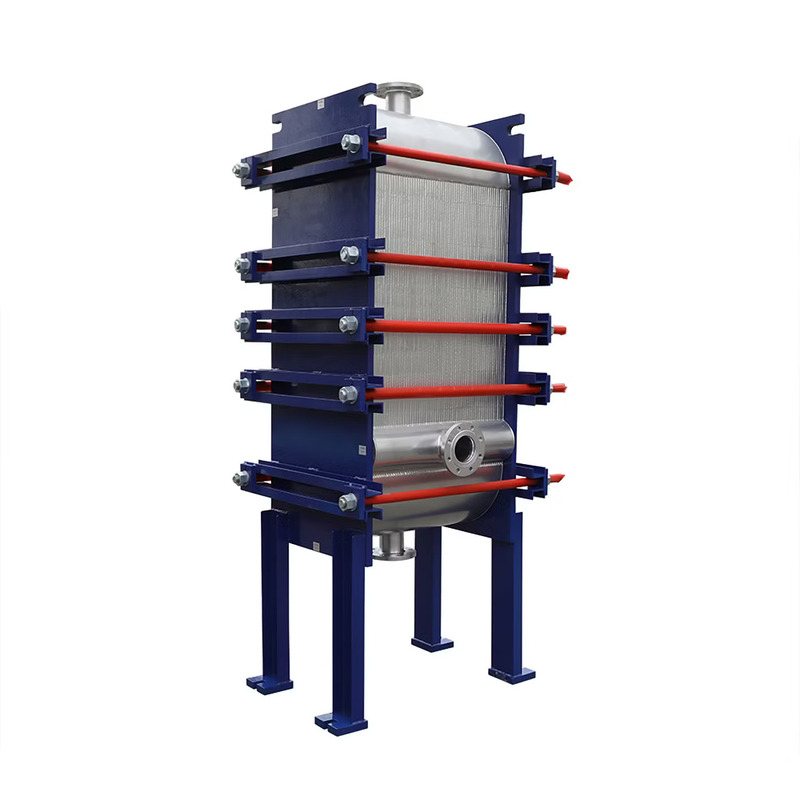Introduction
Reliable Heat Exchanger Condenser is an essential component in many thermal and industrial systems, designed to convert vapor into liquid by efficiently removing heat. This process plays a critical role in maintaining energy balance, improving system performance, and enabling closed-loop operations in power plants, refrigeration systems, chemical processing units, and HVAC applications.
Condensers are a specialized type of heat exchanger, engineered to handle phase change operations, where a working fluid transitions from gaseous to liquid form. The efficiency of a condenser directly impacts the cooling capacity, energy consumption, and reliability of the overall system.
Working Principle of a Heat Exchanger Condenser
The working principle is based on thermal exchange:
- Vapor Entry: Hot vapor enters the condenser through a designated inlet.
- Heat Transfer: The vapor flows through or over a heat transfer surface (tubes, plates, or fins), while a colder fluid (air or water) flows on the opposite side.
- Condensation: As heat is transferred away from the vapor, it loses its latent heat of vaporization and condenses into a liquid.
- Liquid Outlet: The resulting liquid is collected and removed via an outlet port.
Flow configurations:
- Counterflow: Fluids flow in opposite directions, maintaining a high temperature gradient, resulting in more efficient heat exchange.
- Parallel Flow: Both fluids move in the same direction, simpler design but less efficient.
- Crossflow: Air or coolant moves perpendicularly to the vapor path; used in air-cooled condensers.
Construction & Design Elements
- Tube Bundle: Consists of multiple tubes arranged to carry either vapor or cooling fluid. These are often straight or U-shaped and made from thermally conductive materials like copper or stainless steel.
- Shell or Frame: Encases the tube bundle in shell-and-tube condensers or holds plates in plate-type condensers. It is pressure-tested to withstand operational stress.
- Baffles or Spacers: Installed inside the shell to direct fluid flow, increase turbulence, and improve heat transfer rates.
- Headers (Front & Rear Caps): Control the entry and exit of fluids in the tube side. Some headers also allow access for cleaning or inspection.
- Drain & Vent Ports: Condensed liquid exits via the drain port. Vent ports release non-condensable gases or air pockets.
- Expansion Joints: These allow parts of the heat exchanger to expand and contract with temperature changes, preventing structural damage.
Key Features of a Reliable Heat Exchanger Condenser
- High Heat Transfer Efficiency: Enhanced by multi-pass designs, corrugated plates, finned surfaces, and counterflow arrangements. This ensures rapid condensation and low temperature differential.
- Corrosion & Scaling Resistance: Materials like stainless steel, titanium, and cupronickel resist corrosion from water, refrigerants, or chemicals, extending service life.
- Leak-Proof & Pressure-Tested: Units are hydrostatically or pneumatically tested to ensure they can withstand working pressures without leakage.
- Ease of Maintenance: Designs such as removable tube bundles or plates make inspection, cleaning, and replacement easy, reducing downtime.
- Versatile Installation: Units are customizable for horizontal, vertical, or wall-mounted installation, fitting various system layouts.
- Thermal Compensation: In designs like U-tube or floating-head condensers, the internal components can expand independently, preventing thermal stress.
Materials Used in Construction
- Stainless Steel (SS 304, 316, 316L)
- Corrosion-resistant and durable
- Ideal for food, pharma, and chemical use
- Titanium
- Extremely corrosion-resistant
- Best for seawater or aggressive chemical environments
- Copper & Cupronickel (90-10, 70-30)
- Excellent thermal conductivity
- Suitable for HVAC, marine, and refrigeration systems
- Carbon Steel
- Economical choice for non-corrosive environments
- Good mechanical strength
- Aluminum Brass
- Corrosion-resistant in marine settings
- Used in condensers exposed to saltwater
Types of Condenser Heat Exchangers
Shell and Tube Condensers
- Contains a tube bundle within a cylindrical shell.
- Widely used in refineries, power plants, and HVAC systems.
- Suitable for high-pressure and high-capacity systems.
- Easy access for tube cleaning and replacement.
Air-Cooled Condensers
- Use ambient air blown by fans to remove heat from refrigerant vapor.
- No water usage, ideal for remote or dry environments.
- Often used in commercial refrigeration and rooftop HVAC units.
Water-Cooled Condensers
- Use water from cooling towers or other sources to absorb heat.
- Highly efficient due to water’s superior heat capacity.
- Common in large HVAC chillers and central utility systems.
Plate Condenser Heat Exchangers
- Multiple thin metal plates form channels for fluid flow.
- High surface area allows compact design.
- Preferred in food processing, dairy, and pharmaceutical industries.
Reliable Heat Exchanger Condenser is more than just a component and it’s a backbone of thermal control and process efficiency in a wide range of industries. With the right design, materials, and operating principle, condensers help maximize heat transfer, minimize energy waste, and ensure consistent system performance under varying conditions.
By investing in a high-quality, durable condenser:
- You reduce the chances of unplanned downtime due to corrosion, fouling, or leakage.
- You ensure better thermal stability and operational safety.
- You gain the flexibility to operate under high temperature and pressure conditions, while also enjoying ease of maintenance.
Whether you need a compact solution for a food processing plant or a heavy-duty unit for a power station, a reliable heat exchanger condenser will deliver long-term benefits in terms of efficiency, cost-effectiveness, and environmental responsibility. Selecting the right unit, tailored to your process requirements, is a crucial step toward a more optimized and future-ready thermal system.

